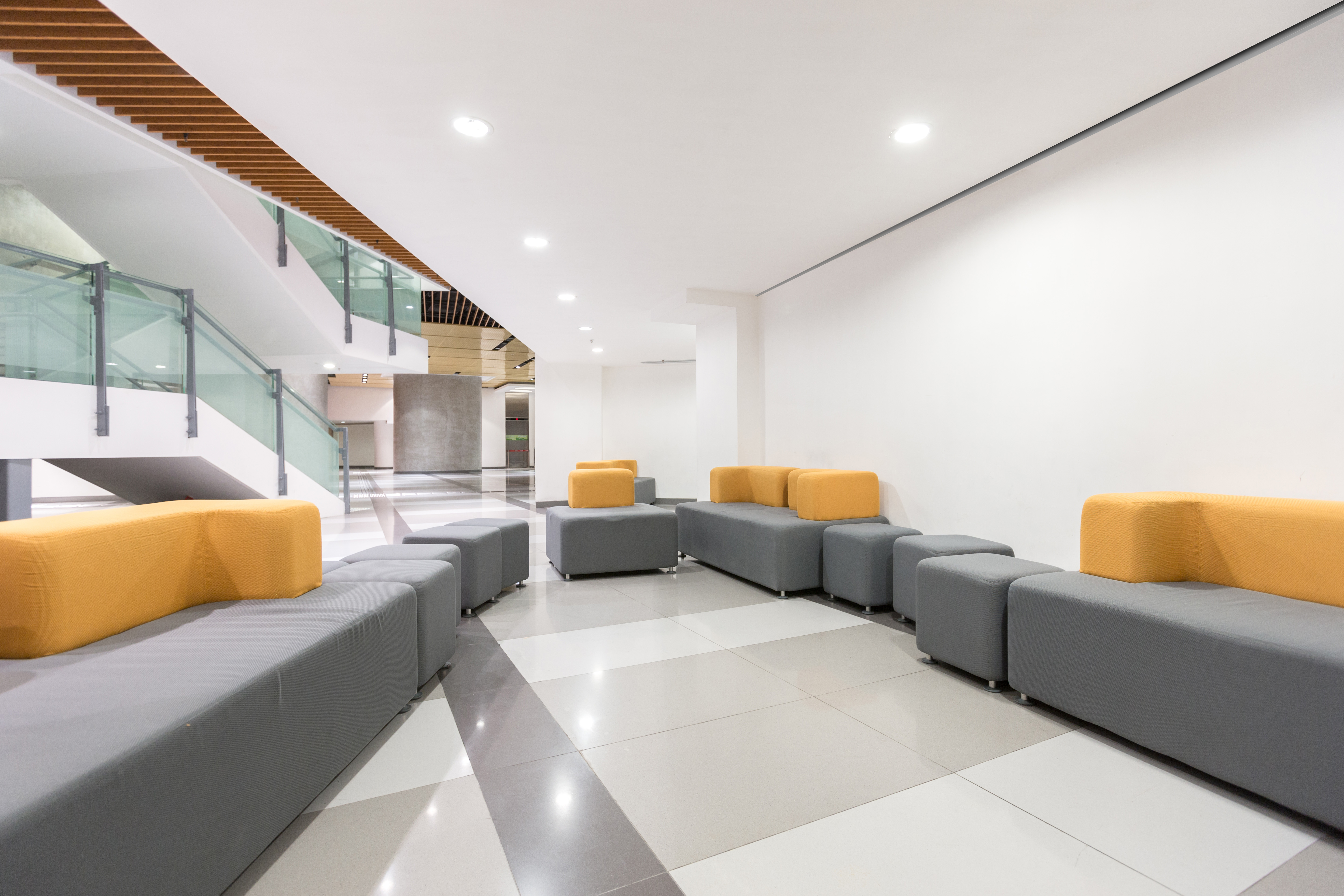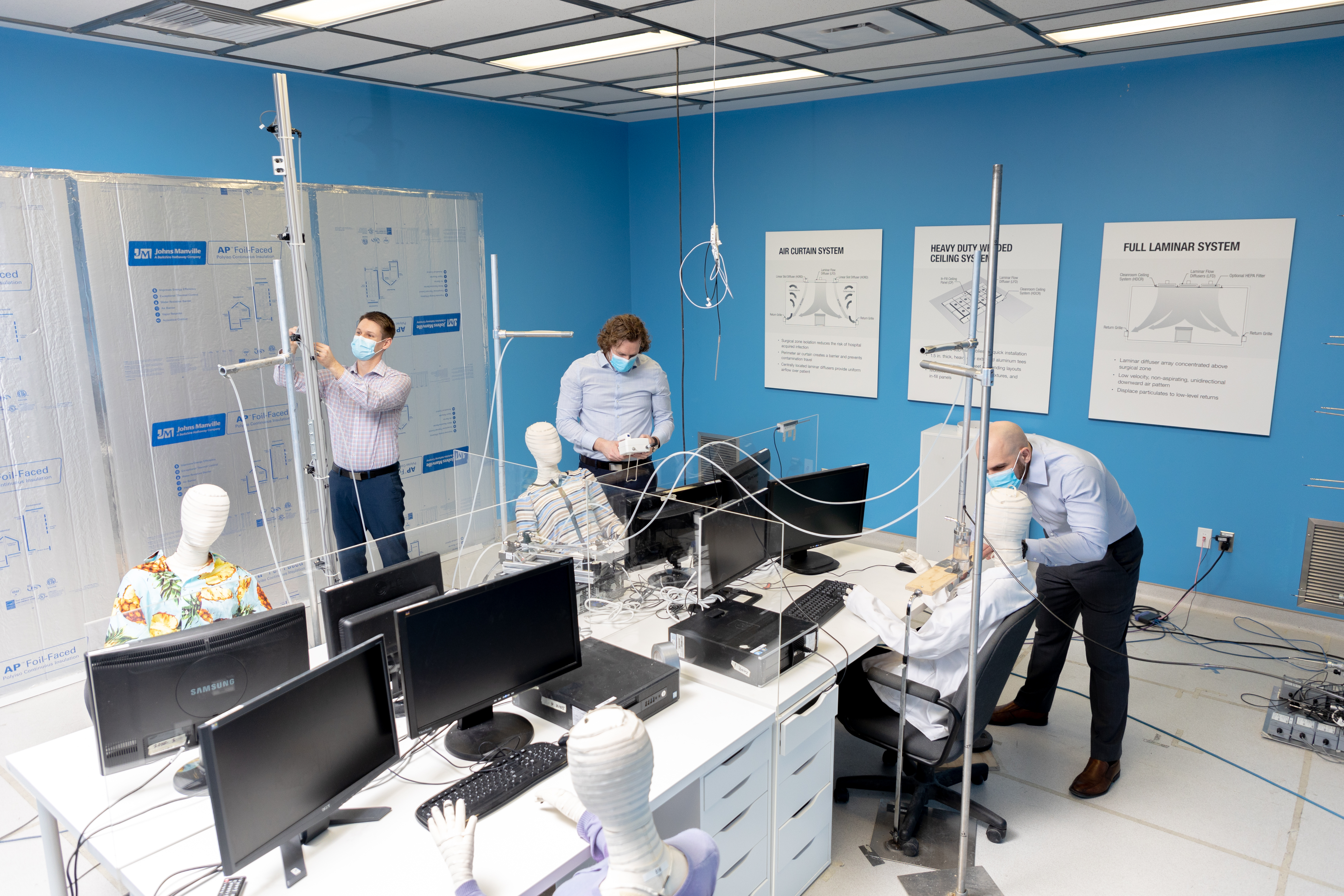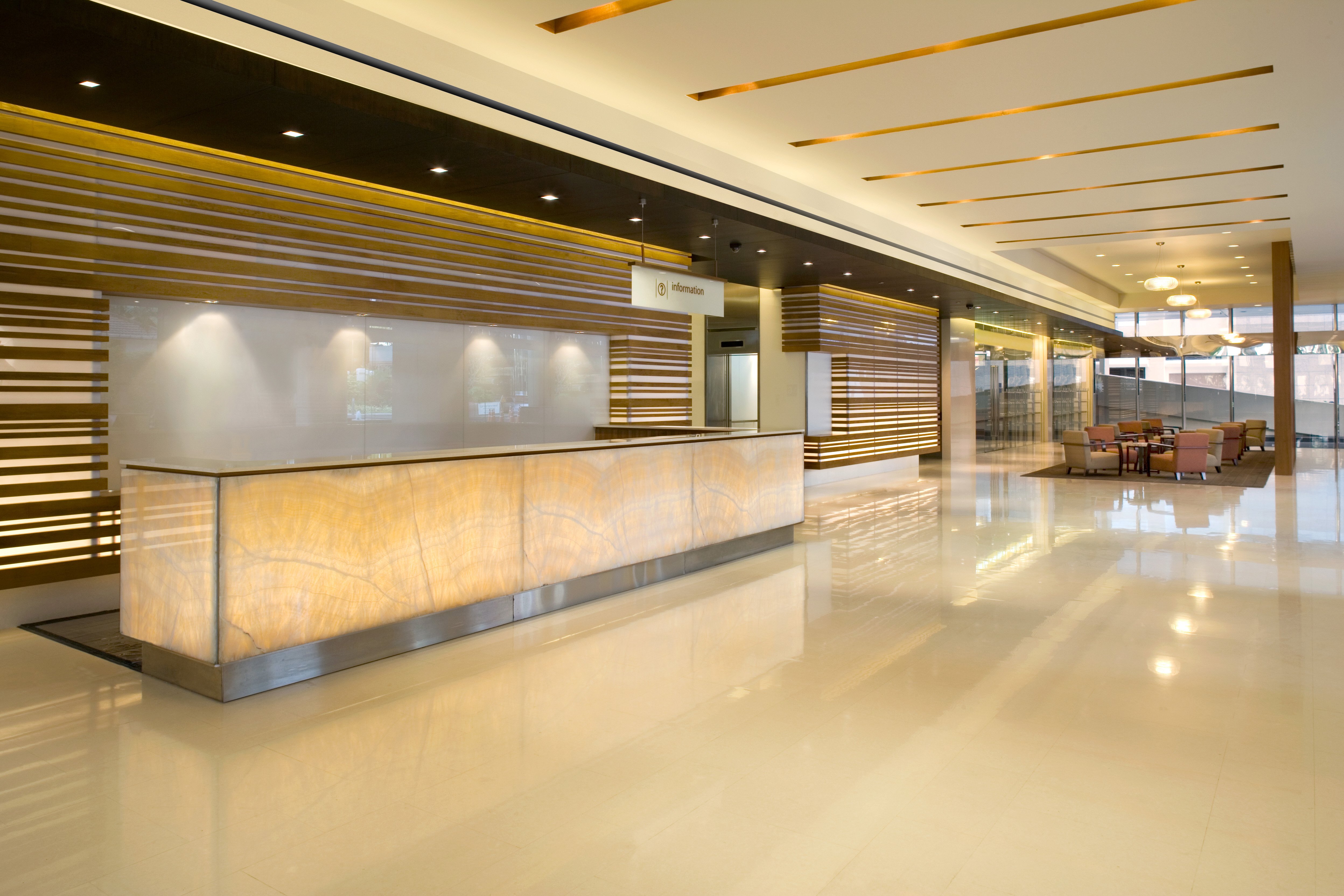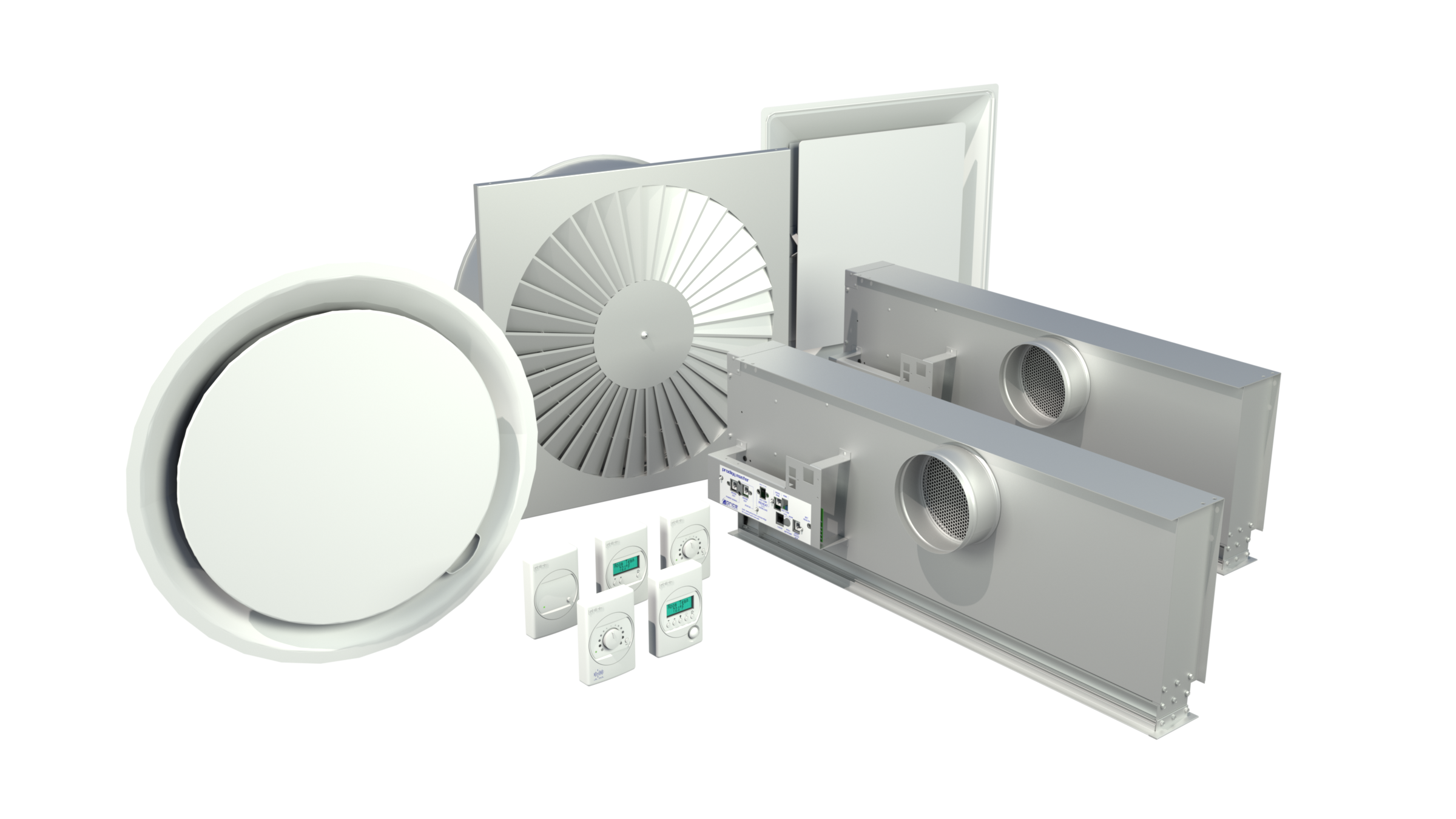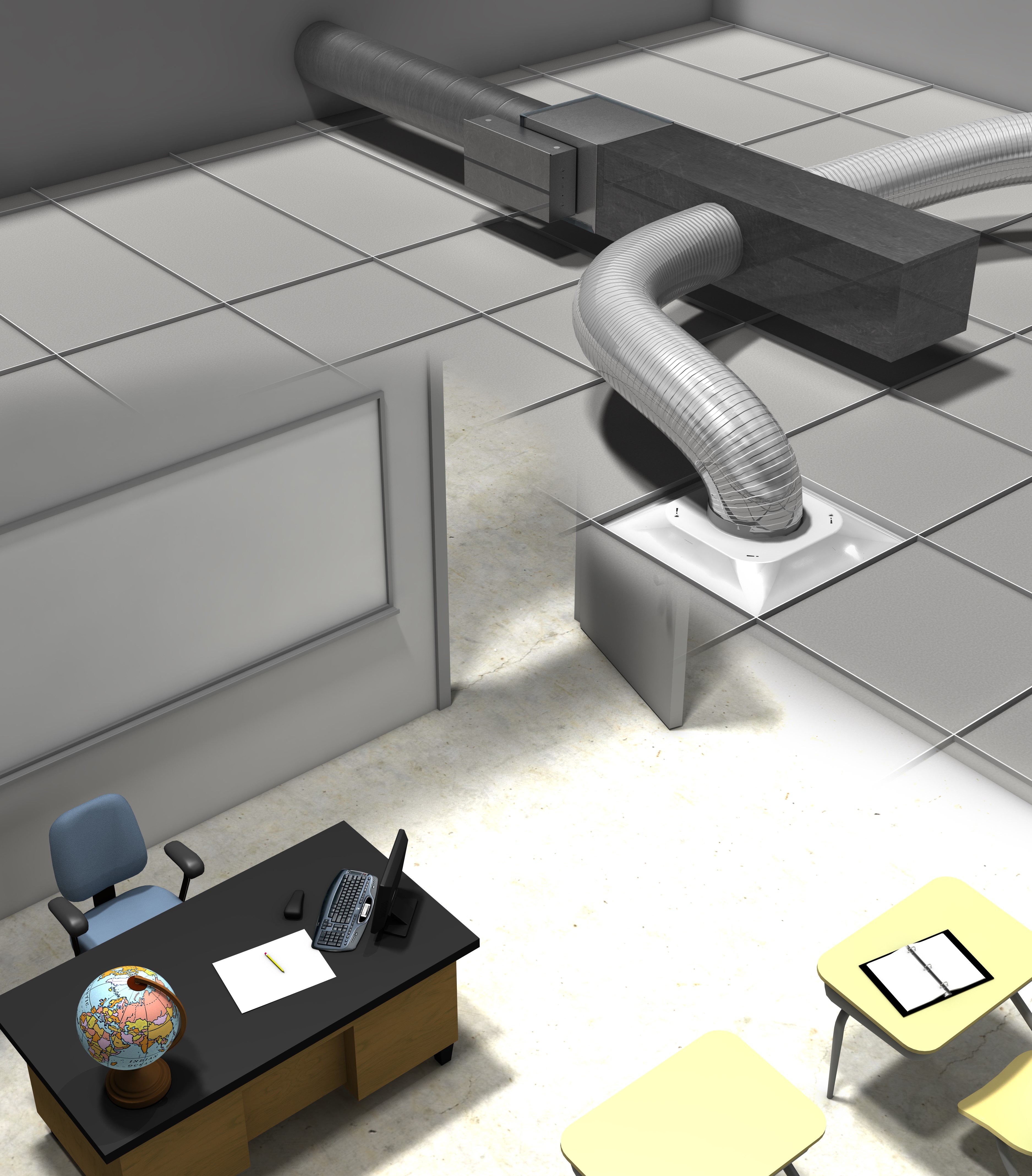How to Select the Best Slot Diffuser Border for Your Space
In the first post in this series, we discussed how long, continuous lengths of linear slot diffusers can integrate overhead mixed air distribution into highly architectural spaces to achieve excellent indoor air quality without sacrificing aesthetics.
Read More
Topics:
GRD,
Diffusers,
HVAC,
Engineering,
Design Engineering,
Architecture
Study by Price Industries and Purdue University Explores How Office Ventilation Affects Particle Concentration
Read More
Topics:
Displacement,
Employees,
HVAC,
Engineering,
Design Engineering,
CFD
Architects and Engineers No Longer Need to Choose Between Performance and Design
Air distribution is a necessary part of any well-designed indoor space. The HVAC system is used not only to provide heating and cooling in our buildings but also as a source of fresh, clean air. In the case of highly architectural spaces, how can air distribution be effectively integrated into the built environment without negatively impacting the overall appearance and feel of the architectural design?
Read More
Topics:
GRD,
Diffusers,
HVAC,
Engineering,
Design Engineering,
Architecture
An Energy-Efficient Solution for Small-Zone Control
A variable air volume (VAV) diffuser is essentially a ceiling diffuser with a built-in VAV damper and thermostat. Despite its simplicity, this device comes with many benefits and is an effective way to create small-zone comfort for building occupants.
Read More
Topics:
GRD,
Diffusers,
Thermal Comfort,
HVAC Fundamentals,
HVAC,
Engineering,
Design Engineering
An Essential Design Consideration for Mechanical Engineers
Pressure drop – the difference in pressure between two points in a fluid-carrying system – is one of the most critical design considerations for air distribution equipment in the HVAC industry. The problem with pressure drop for terminal units is that there are a number of metrics that are often confused with one another despite referring to different performance variables. These include static pressure drop, velocity pressure drop, pressure drop associated with acoustics and pressure drop associated with accessories.
Read More
Topics:
Pressure Drop,
Terminals,
HVAC Fundamentals,
HVAC,
Engineering,
Design Engineering


